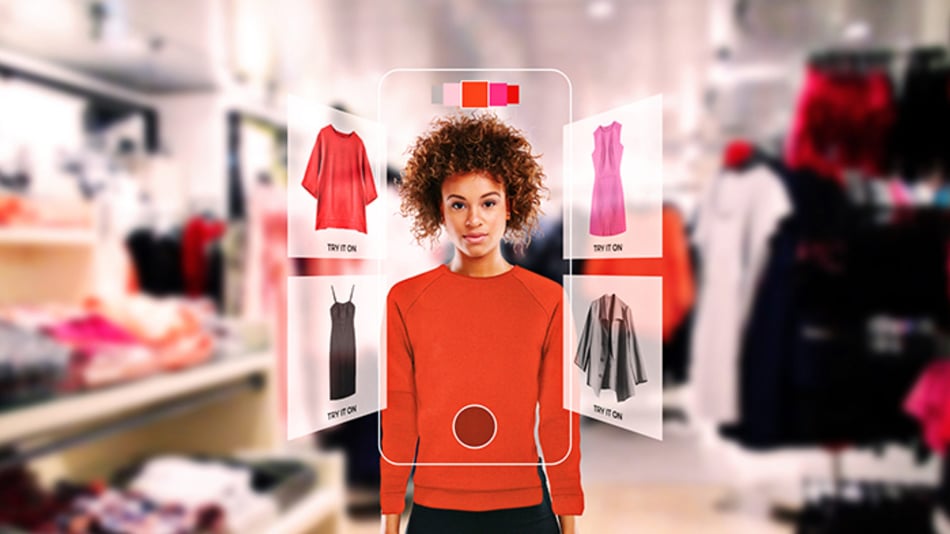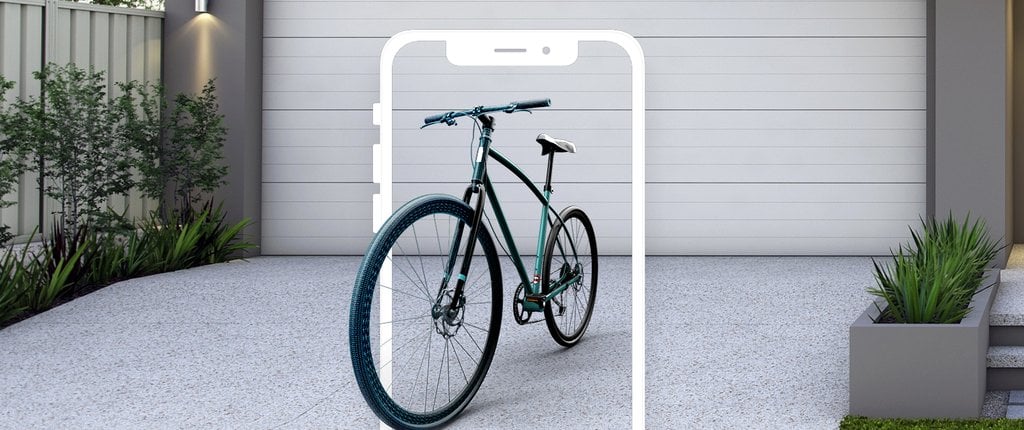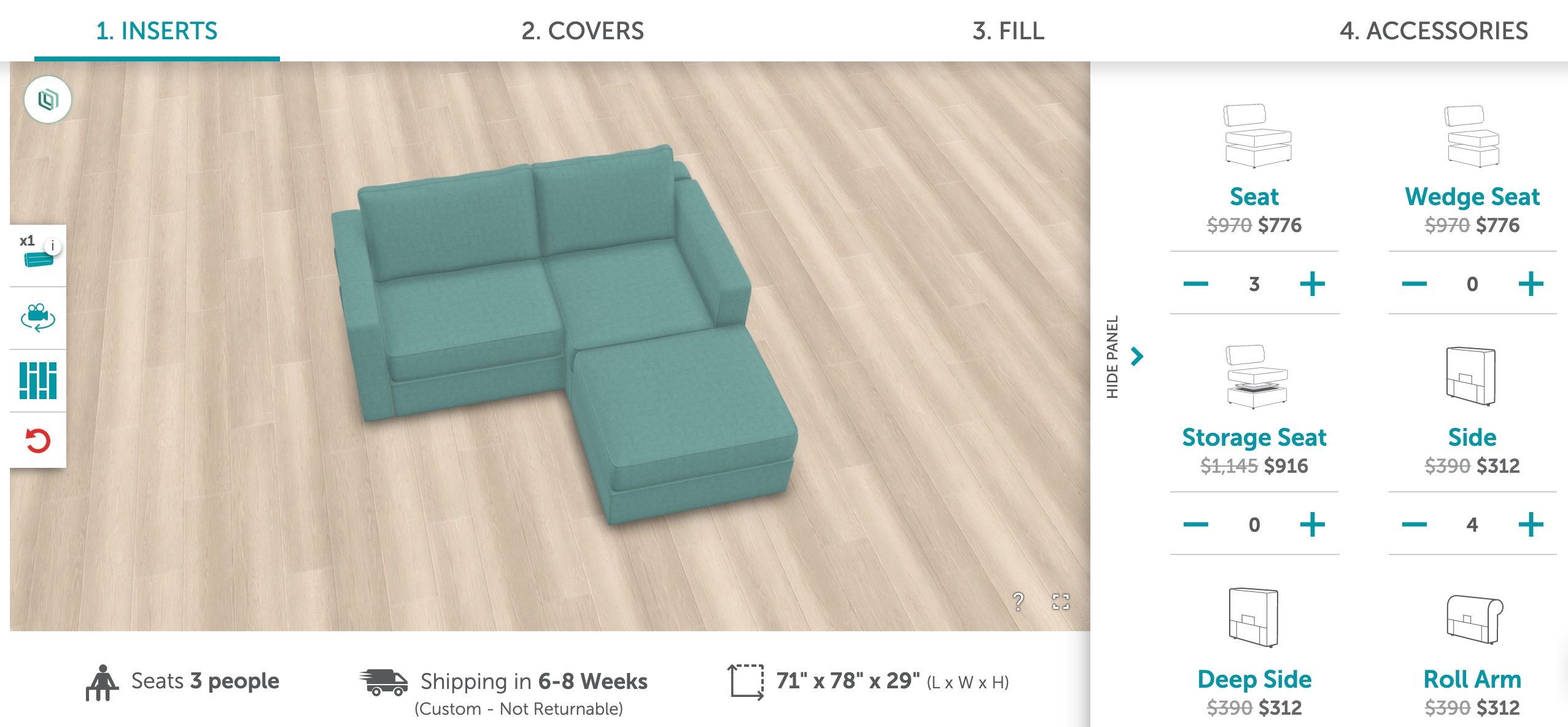Why You Shouldn’t Try Try-On AR...but You Should Try Configurable AR
In the past several years, a number of major brands like Gucci and Sephora have rolled out augmented reality retail tools that let users virtually try on products like sneakers or lipstick from the comfort of their own homes.
While the future of AR technology is certainly bright, the try-on trend isn’t likely to become a paradigm shift any time soon. For most retail companies, buzzy try-on AR probably won’t be a worthwhile investment for the next generation of online shopping. Here’s why, and here’s what you should invest in instead: configurable AR.
The Limits of Try-On AR
This type of augmented reality requires advanced and costly software, which gives brands who want to take a stab at developing it a wide margin of error. There are three major limits when it comes to try-on AR today.
1: Try-on AR is hard to get right.
A smooth shopping experience is crucial to convert a customer: companies that prioritize customer experience tend to enjoy higher revenue and greater profitability. While try-on AR sounds like an impressive experience in theory, a glitchy and/or slow-to-load execution can cost you a potential customer.
Imagine this: a shopper is interested in a pair of sneakers, so she downloads the brand’s AR app to virtually try them on. But the app takes forever to load, and when she’s finally able to try the AR sneakers on her feet, they’re pixelated and they keep freezing. She can’t get a good sense of what they’ll look like in real life. She abandons the shoes and the site altogether.
Plus, try-on is mostly limited to four retail industries that make products for our bodies: footwear, apparel, accessories, and cosmetics. A distorted image or inaccurate representation of the shopper may erode their trust.
2: Shoppers don’t want to download an app.
Most of the time, consumers don’t want to download a retailer’s app, which is often the necessary medium for a try-on AR feature.
Unless you can make a million-dollar deal with a popular app like Snapchat (as Gucci did), you’ll probably need your customers to download your app to use a try-on feature, which is a lot of app development work for a nonessential feature.
3: Try-on AR is prohibitively expensive to scale.
Those who do get try-on AR right usually have extensive capital and resources to develop it.
Building an app or partnering with a platform like Snapchat to deliver an AR feature is mostly reserved for high-revenue companies. The seamless try-on AR experience of a brand like Nike isn’t attainable for most retailers.
And new AR devices that offer try-on experiences, like Apple AR glasses, will first land in the hands of tech enthusiasts and big spenders—in other words, not a lot of people. This medium is unlikely to be accessible to the average consumer in the near future.
In the meantime, the average consumer will continue to shop on familiar platforms, like mobile and web browsers, where there’s already a wide range of AR functionality ripe for use in retail.
The Benefits of Configurable AR
The true cost-effective investment in AR is “environmental” AR. This refers to an overlay of a product in the setting it will live in, such as a sofa in a living room. And the good news is that this type of AR can integrate with existing eCommerce web and mobile platforms.
Threekit’s AR platform now features configurable augmented reality, which basically just means that the 3D configuration of item details, colors, and add-ons against a custom backdrop is all in the customer’s hands. With configurable AR, retailers can more effectively showcase products and increase the likelihood of shoppers proceeding to checkout.
Here the three major benefits of going with configurable AR:
1: Configurable AR gives shoppers the visual context they need.
For many purchase decisions, context is everything. Instead of a shopper’s face or body, though, a physical space is a lot easier to input into an AR tool.
On the consumer-facing side, configurable AR provides visual context that helps shoppers decide if a piece will fit in and suit a space. When shopping for furniture, size matters, and product visualization with configurable AR represents true product dimensions so that, for instance, a shopper can see in real time if an item will have clearance in between walls.
On the B2B side, configurable AR shows buyers in industries with highly configurable products how a product will work in the environment it’s intended for. For instance, using AR, a buyer at a hospital can overlay a new x-ray machine into the imaging room it’ll be placed in to assess product dimensions.
2: Configurable AR Delivers Immediate Returns on Investment
Configurable AR is a much lower-scale investment than try-on AR features, which opens up a lot more room for returns.
There are a few benefits of configurable AR for retailers:
- It’s a differentiator.
- It provides an immersive experience, which customers want.
- It increases sales and conversions.
3: Configurable AR works for more industries.
Whereas try-on is limited to personal items (and B2C industries), this kind of augmented reality is suitable for a range of industries and products, including B2B.
Invest in Configurable AR Now, Save Try-On AR for Later
Augmented reality in eCommerce is poised to get a lot bigger in the coming years. But the rate of consumer adoption largely relies on what kinds of experiences brands have to offer.
Until Apple or Google make try-on AR widely accessible, big brands will likely keep the upper hand in virtual personal goods shopping. For now, industries that make physical products can start with configurable AR, an attainable and cost-effective solution that allows customers to see and configure a myriad of product variations and drives more sales.


